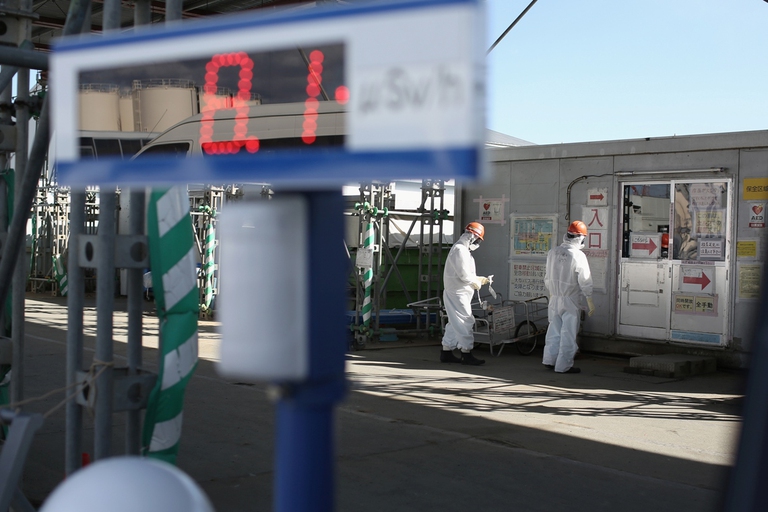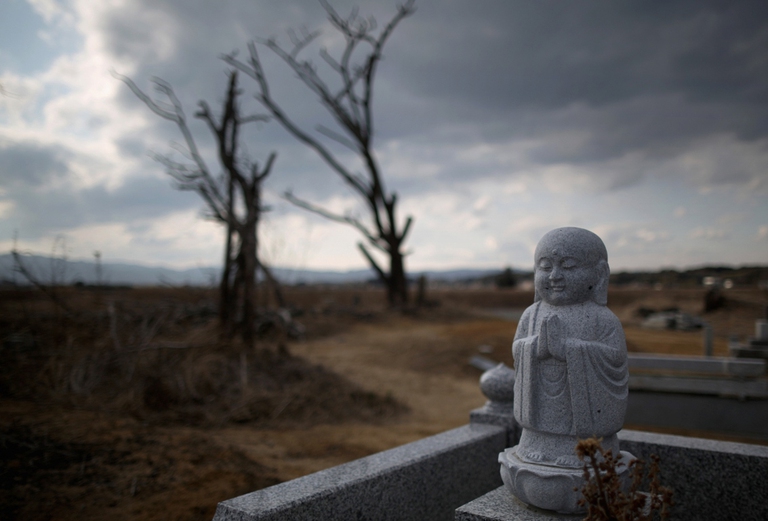
A group of experts in Tokyo suggested pouring radioactive water from Fukushima into the open sea. A marine biochemist explains the consequences of this absurd decision.
Five years have passed since the 11th of March 2011, when one the most devastating natural disasters of our decade took place in Japan. The Fukushima Daiichi Nuclear Plant accident was the consequence of a 9.0 magnitude earthquake, so strong that it permanently moved Japan’s main island more than two metres to the east, which
Five years have passed since the 11th of March 2011, when one the most devastating natural disasters of our decade took place in Japan. The Fukushima Daiichi Nuclear Plant accident was the consequence of a 9.0 magnitude earthquake, so strong that it permanently moved Japan’s main island more than two metres to the east, which caused a tsunami that compromised reactors at the plant. After the death of more than twenty thousand people, with hundreds of thousands left homeless, important questions remain unanswered amidst much anger in Japan. Whilst some progress has been made, a long road to recovery lies ahead.
Former residents of the exclusion zone, which lies within a 20 kilometres radius of the nuclear plant, are unable to return home because of extremely high levels of radioactive contamination. The public is fighting Prime Minister Shinzo Abe’s attempt to reopen nuclear plants in the country, which were all shut down after the disaster. The Tokio Electric Power Company (TEPCO), Fukushima Daichii’s operator, argues that nuclear power is still the most feasible form of energy for Japan, unless the country wants to worsen its carbon footprint and depend on foreign energy sources. In the meantime, the legal battle continues: recently, three former TEPCO executives were charged with professional negligence.
When it comes to the most challenging part of the cleanup, TEPCO has not yet come up with a plan to remove the highly radioactive nuclear fuel found at the bottom of three reactors. The monetary cost would be sky high: the decontamination and dismantling of the plant could take up to forty years with cleaning costs of over 2,000 billion Japanese Yen (20 billion dollars). Damages, including payments to evacuees, will amount to over 10,000 billion Yen (equivalent to 100 billion dollars). The government has also spent more than 170 billion Yen (1.5 billion dollars) collecting radioactive soil from the disaster area, now being stored in thousands of large black bags.
On a positive note, 1,500 spent fuel rods were removed from reactor number four. TEPCO is also working to reduce 400 tonnes of rain and groundwater breaching the plant’s defenses daily, therefore preventing them from being contaminated and requiring treatment and storage. Also, workers can walk around without full-face shields or hazmat (hazardous materials) suits on parts of the site.
Looking to the future, the most pressing issue remains the reactors. It is not yet known where all the molten nuclear debris is and how to clean it. Since no human would survive coming into such close contact with it, TEPCO’s only choice for the cleanup of the containment vessel will be to use of robots – but these have failed in the past.
Outside Japan, concern is still being felt on the West Coast of North America, where higher amounts of radiation than anticipated have reached the shores of the Pacific Coast. Research conducted by marine radiochemist Ken Buesseler found that the amount of cesium, a toxic metal, in seawater off Vancouver Island in Canada is almost six times the concentration recorded since it was first introduced into the oceans as a result of nuclear bomb testing; a practice halted in 1963. This large buildup in Pacific cesium appears to be ongoing.
In 2012 the World Health Organization reported that in the locations that experienced the highest doses of radiation, residents are 4 to 7% more likely to develop certain forms of cancer, such as leukemia and thyroid cancer. However, it still may be too soon to tell what the long-term effects of the nuclear fallout will be. The health repercussions could be more severe, both in Japan and other countries affected by the disaster.
Siamo anche su WhatsApp. Segui il canale ufficiale LifeGate per restare aggiornata, aggiornato sulle ultime notizie e sulle nostre attività.
![]()
Quest'opera è distribuita con Licenza Creative Commons Attribuzione - Non commerciale - Non opere derivate 4.0 Internazionale.
A group of experts in Tokyo suggested pouring radioactive water from Fukushima into the open sea. A marine biochemist explains the consequences of this absurd decision.
A federal court in Washington, D.C. has struck down the Dakota Access Pipeline, following years of campaigning by the Standing Rock Sioux tribe.
The Scottish island of Eigg is self-sufficient for its energy needs, relying almost entirely on renewable sources, especially thanks to a coordinated community effort.
President Magufuli in unmovable in going ahead with the Stiegler’s Gorge dam despite conservationists’ warnings of the damage it will cause the Selous Game Reserve’s ecosystem and wildlife.
A large dam along the Luangwa River in Zambia would have posed a serious risk to local people and wildlife, leading hundreds of thousands to oppose it. A call to which the government responded by halting plans to build it.
The first one megawatt solar power plant in the Chernobyl exclusion zone has become operational. This is the first step in a renewable energy development project promoted by the Ukrainian government in the area.
A tanker exploded at a gas and petrol station in Nigeria’s Nasarawa state on the 10th of September, killing 35 people and leaving some burned beyond recognition; 3 citizens had several spine and brain injuries, 2 of them are still on Intesive Care Units. Fela Habila , a local singer, is now stable and out of danger but
The largest tidal power plant in the world will be built in the Larantuka Straits. It will serve 100,000 people and help overcome some of the challenges of energy provision in Indonesia.
Robben Island’s solar energy micro-grid project will produce almost one million kilowatt hours of electricity annually, significantly reducing the cost and impact of buying diesel.









